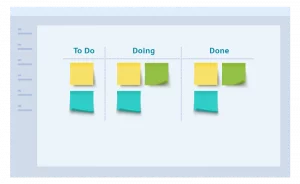
Offshore Software Development Methodology – A Success is on the Horizon
Offshore Software Development, first introduced in the early days of Silicon Valley, has grown rapidly in the era of a technological boom. Indeed, it is now a flourishing billion-dollar industry. Offshoring software development offers cost-efficiency, technical expertise, quality of products, and business core concentration. Choosing a prominent offshore software development firm, on the other hand, is a difficult decision. It takes months to conduct research and finalize business-to-business cooperation. As a top offshore software development company in Vietnam, HDWEBSOFT understands the significance of an appropriate custom software development methodology in achieving success. We have compiled a list of the top six offshore software development methodologies.
Before we get to the six finest custom software development methodologies, let’s define each software development methodology and why it affects success achievement.
Offshore Software Development Methodology
Definition
Software Development Methodology, which stretches back to the advent of computing, is a synthesis of design principles and pragmatic reality. It brings a methodical approach to software development.
The software development methodology gives a framework for developers to collaborate more effectively as a team. It governs how information is disseminated within a team and formalizes communication.
However, a single methodology has its own advantages and disadvantages. Therefore, it is heavily dependent on your business requirements, final objectives, and structure to get the most out of an offshore software development methodology’s advantages. Besides, various custom offshore software development methodologies can also be used for different projects.
Influence
Software development methodology requires strict adherence if your wish is to eradicate numerous risks during the development and design phases. Precisely, without a systematic software development structure, grasping customers’ ever-changing requests is incredibly troublesome for developers. Furthermore, it is exacerbated when misunderstanding appears.
Each offshore software development methodology has its own set of strengths and drawbacks. Although a methodology exists for a variety of reasons, all methodologies are beneficial to both developers and clients. With the goal of providing a more realistic delivery timeline, a suitable offshore software development methodology will help you minimize inefficient work and save time when developers have to deal with unexpected changes.
Three categories of methodologies
Developers have a plethora of decisions when it comes to software development approaches. Most of the available software development methodologies are sorted by categorized models like Waterfall, Iteration, and Continuation.
Waterfall model
As one of the most popular methodologies introduced in the early days, Waterfall is a predetermined implementation sequence that allows tasks to be completed in a predictable order. However, with the rigid structure, the failure rate of using a Waterfall methodology is getting higher for many projects.
Iterative model
The iteration/iterative model is an alternative model for Waterfall since it shifts the focus to more constant revisions instead. With the lessened concentration on rigid procedures, the iterative methodology allows rapid development and creative testing of ideas.
Continuous approach
Inspired by the Toyota Production System, Continuation ensures the stability of development flow between phases. As a result, it helps developers save effort and enhance working efficiency.
Top 6 Offshore Software Development Methodologies
With years of experience, we are delighted to share with you the top 6 most popular software development methodologies. Together with the introduction of each approach, we also point out its pros and cons.
Agile Development Methodology
Agile methodology, classified as an iterative model, is a well-known custom software development methodology. It divides tasks into short sprints so that developers can take good care of details to bring more value to clients. Additionally, Agile offers flexible modifications allowing immediate changes and quick delivery.
Agile methodology is best suited for projects with ever-changing development requirements. Also, it supports ventures in new niches or learning about the needs of new markets. However, Agile requires developers a high level of independent working and great familiarity with fast-paced environments.
| Advantages | Disadvantages |
|
|
Kanban Development Methodology
Kanban methodology, inspired by the Toyota Production System, is a continuous model allowing efficient working management on human systems. Indeed, it strikes a balance between demands and the development ability to handle system-level obstacles. Besides, the Kanban approach helps to enhance task management and visualize which procedures to proceed in a logical order. Therefore, it is used to enhance inventory management. In a word, it has a great focus on detailed achievements like Agile methodology and a great ability to organize requirements into a systematic order.
With a Kanban board, Kanban methodology visualizes the entire project for easier tracking. Indeed, task processes in every stage will be displayed with both internal and external members.
| Advantages | Disadvantages |
|
|
Scrum Development Methodology
Following Agile philosophy, Scrum methodology is no longer a new term to those who are passionate about IT sector discovery. It divides projects into smaller modules and employs a method for determining the work to be completed. Scrum is one of the most favored methodologies thanks to its structure of adapting to condition changes and user requirements at a fast pace. The re-prioritization approach, which results in short release cycles, allows developers to constantly learn and improve their work.
Scrum methodology is most suitable for projects with fast-changing requirements. Indeed, it helps a quick MVP development and high-quality user testing sequence. However, you can only get the most out of Scrum methodology when you have a skillful, experienced, and fully committed development team.
| Advantages | Disadvantages |
|
|
Spiral Development Methodology
As a task-driven software development methodology, Spiral stands out from the crowd by providing support for Risk Handling. It, based on Agile, has a diagrammatic structure with many loops, which vary from project to project. Precisely, the number of risks in a project decides the exact number of phases of the software development process (a Phase of the software development process is a loop of spiral). Thanks to its structure, Spiral minimizes confusion and repetitive work to develop complex projects in the most cost-saving and efficient way.
At any point the spiral’s radius symbolizes the project’s expenses (cost) and the dimension shows the current stage’s achievement. Even though a Spiral model is the most suitable for complex projects, it requires a knowledgeable and dedicated project manager to never deviate from delivering value to end-users.
| Advantages | Disadvantages |
|
|
Big Bang Development Methodology
Big Bang methodology is the most basic SDLC (Software Development Life Cycle) paradigm that does not adhere to any specific procedure. To be exact, the product generated using this process is only built when clients request it, often called custom software development. Therefore, it requires no preparation but a lot of funds, effort, and other resources. However, the final product may fall short of the requirements.
| Advantages | Disadvantages |
|
|
Learn more about the Big Bang Methodology in Offshore Software Development.
Waterfall Development Methodology
Waterfall methodology, introduced in the early days of the software development process, provides a workflow like a waterfall. Indeed, all phases adhere to a process with a fixed order that a phase will begin after the previous one is completed.
The Waterfall model has been long popular throughout time thanks to its simplicity, linearity, and one-direction workflow. Therefore, it is a friendly and much preferable model for a less experienced or even a novice team.
| Advantages | Disadvantages |
|
|
Conclusion
Briefly, offshore software development methodologies are created to have a guided structure for completed software development in the early days. Its importance and influence on software development are undeniable since developers still use them as a guideline for every project. In a word, no matter offshore software development or software outsourcing services, software development methodologies are indispensable parts, which contribute to a software development success.
Despite the introduction of new methodologies, each model has its own strengths and weaknesses that cannot triumph over others. Therefore, we have compiled the top 6 most popular custom software development methodologies and taken you through their advantages and disadvantages.
Furthermore, there are more factors that affect your software development quality. However, it is crucial that you find the right software development methodology and a trustworthy offshore development team. In the event of wish for a checklist to hire a reliable offshore development team, please see this blog: Checklist to hire an offshore software development team










